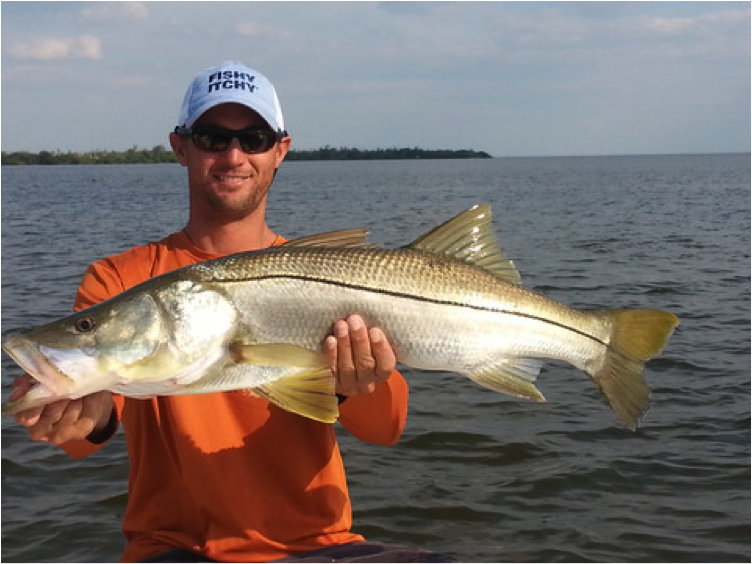If you are one of the many Snowbirds or seasonal residents returning to Florida for the winter, you are probably anxious to get back into the fishing mode and putting a fresh caught dinner on the table. After many months of being away in areas with a lot higher latitude, it’s a good idea to review some of the basics before venturing out on the water.
For starters, review the most recent regulations regarding the fishery rules. For the inshore folks, snook season is open from February 1st until May 31st. As of this writing, there have been no other major changes to our fishing rules. Check the status of your Florida fishing license as well, prior to heading out. One of the easiest ways to research local fishing laws is to frequently visit www.myfwc.com.
Tackle considerations are always at the forefront of most fishing related topics and having the best tackle for the situation is important. As I say in a lot of our fishing classes, you can spend a ton of money on fishing tackle. If you have a decent disposable income, great, the tackle shops will welcome you with open arms. If you are like most folks, though, there is a reasonable budget to consider when buying tackle. You do not always need the latest and greatest rods, reels and lures to be successful here in eastern coast Florida.
For starters, a seven-foot rod matched with any reputable 3000 or 4000 series spinning reel will suffice for many inshore and near shore applications. I always recommend you put a little more money into the reel than the rod. Smooth drags and ball bearings are your friends, and with the harsh environment the salt water creates, you don’t want a failure at a crucial time. Expect to spend somewhere around $150 – $200 on a decent rod and reel that will last you more than one season. Remember, “Good is not cheap, and cheap is not good.” Get the most your budget will allow.
One topic that always comes up is the debate over braided line vs. mono. I will tell you this: just about every reel on my rod rack is filled with braid. Cast ability, feel and resilience are all factors that make braided line almost a no-brainer. Yes, it does cost a bit more. However, if reversed onto another reel once or twice a season, it will last much longer than mono and ultimately prove to be a better value.
Terminal gear such as swivels, leaders, hooks and sinkers are fairly easy. Swivels I use occasionally, but only with lures that spin a lot. Other than that, I eliminate them from the equation. You cannot go wrong with twenty to thirty pound leader material in either regular mono or fluorocarbon varieties. Hooks can range from size one up to 3/0 for many fishing scenarios. I would highly recommend using circle hooks as they are better at doing what they are intended to do—catch fish. They are also excellent for conservation and required by law for all of the reef species.
Lures are a topic I could write about for hours, so I will try to narrow it down to a few key points. Do not become enamored with all of the fancy colors and packaging when you walk into a tackle shop. Remember, fish do not see color the way humans do and the marketing folks know what catches your eye! There are two main factors to consider when purchasing lures and they are color shade and size. You’ve heard the expression, “match the hatch?” Well, all you need to remember is to get light colored lures and dark colored lures. Then buy some big ones and some smaller ones. Take a DOA Shrimp for example. They are obviously made in a variety of colors and sizes, but you do not need to buy one of every flavor in the store to catch fish. I will typically purchase a bright pattern, a root beer pattern, and then different sizes to match the bait (or hatch). Buy lures that are light and dark, then adjust the size from there.
Another factor to consider about lures or even baits for that matter is to understand that fishing should be three-dimensional. Fish feed in all levels of the water column from the surface to the bottom. Consider where they are intended to be presented when purchasing lures. If you buy a floating surface popper, don’t expect to catch too many flounder or snapper. However, a soft plastic lure on a light jig head can be retrieved quickly to cover the upper levels, or bounced slowly along the bottom for the deeper feeding fish. This is all part of what we call fishing smarter, not harder.
As we move into the coolest month, shrimp will be the best all around bait for just about every situation. Regardless if you’re fishing a flat or over a deep wreck offshore, everything eats a shrimp! With water temperatures falling, slow down your presentation as slow as you can, and then slow it down some more. Good luck anglers.

